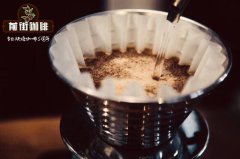What is the fragrance of coffee beans? why the aroma of coffee beans comes from inexplicable chemical reactions.

Professional coffee knowledge exchange more coffee bean information please follow the coffee workshop (Wechat official account cafe_style)
Qianjie-introduction to the source of coffee aroma
Aroma, flavor, aftertaste, acidity and alcohol thickness-all five properties are collided by different compounds. On the cup table, we use our senses to analyze the taste and aroma, which are also caused by chemical compounds. First we smell the dry incense, then the wet incense, and finally the sucking tasting. At each stage, there are different molecules at work.
Some non-volatile compounds that you should know
When we talk about non-volatile compounds, we should emphasize alkaloids (caffeine and trigonelline), chlorogenic acid, carboxylic acid, carbohydrates and polysaccharides, lipids, proteins, melanoids and minerals.
Caffeine is soluble in water and can affect the strength, bitterness and mellow thickness of brewed coffee. Another essential alkaloid is trigonelline, which is also the source of the aroma of roasted beans and coffee.
Chlorogenic acid: the important thing about understanding chlorogenic acid is that they are formed from trans cinnamic acid and quinic acid. Let me explain: quinic acid dominates the bitter and astringent taste of coffee, which is also the source of these flavors. Chlorogenic acid degrades during baking, which means we feel an increase in quinic acid. This is one of the important reasons why deep-baked beans taste bitter.
Organic acids: now let's talk about what high-quality acids are. This is a key attribute of coffee quality and is related to sweetness.
Carbohydrates and polysaccharides: some polysaccharides are forms of carbohydrates, such as mannan and cellulose. These sweet compounds play a vital role in retaining volatile compounds in coffee, that is, increasing the aroma of coffee. In terms of flavor, these compounds are also related to the alcohol thickness of coffee. Moreover, smaller glucose and fructose can increase the sweetness of coffee.
Lipids help to improve the taste of coffee. They are extracted from beans and are the protagonists of CREMA on the surface of espresso. The baking process doesn't really affect its content, but in the baking oven, lipids do seep out to the surface of the coffee beans.
Finally, we will talk about melanoid, which is the product of Maillard reaction: the reaction between amino acids and carboxyl groups of reduced sugars. They are macromolecules, the substances that make coffee beans brown, and at the same time, they increase the taste when brewing. This means that the amino acid content of coffee is closely related to its quality, the more amino acids, the more reaction, the more melanoid.
Note, however, that the color of coffee is not only caused by melanin, it is also the result of caramelization of sugar.
Knowledge: shallow roasting is mainly sour and flavor, if the baking is not handled properly, there will be a sense of astringency and irritation, while the mellow thickness and flavor of coffee feel lower.
In short: Qianjie is a coffee research hall, happy to share the knowledge about coffee with you, we share unreservedly just to make more friends fall in love with coffee, and there will be three low-discount coffee activities every month. The reason is that Qianjie wants to make more friends drink the best coffee at the lowest price, which has been Qianjie's tenet for 6 years!
END
Important Notice :
前街咖啡 FrontStreet Coffee has moved to new addredd:
FrontStreet Coffee Address: 315,Donghua East Road,GuangZhou
Tel:020 38364473
- Prev

Coffee beans Rose Summer is Arabica Columbia Water washed Rose Summer fresh and elegant Flower and Fruit Tea
Professional coffee knowledge exchange more coffee bean information please follow the coffee workshop (Wechat official account cafe_style) front street-Colombia Saint Ario Manor washing Rose Summer this variety was first collected in the coffee forest in Ethiopia in the 1930s, the collected seeds were sent to the Lyamungu research station in Tanzania, and then in 1953, they were taken.
- Next

How does the aroma of coffee come out? the strong aroma of coffee beans is fried just right.
Professional coffee knowledge exchange more coffee bean information please follow the coffee workshop (Wechat official account cafe_style) front street-coffee aroma source introduction 1 caramel reaction the sugar in coffee beans caramel reaction at about 170 to 200 ℃, which is exactly the melting point of sucrose [185 ℃], the temperature of the explosion stage when coffee beans are roasted. The product of caramel reaction is divided into two parts: the dehydration of a sugar.
Related
- Beginners will see the "Coffee pull flower" guide!
- What is the difference between ice blog purified milk and ordinary milk coffee?
- Why is the Philippines the largest producer of crops in Liberia?
- For coffee extraction, should the fine powder be retained?
- How does extracted espresso fill pressed powder? How much strength does it take to press the powder?
- How to make jasmine cold extract coffee? Is the jasmine + latte good?
- Will this little toy really make the coffee taste better? How does Lily Drip affect coffee extraction?
- Will the action of slapping the filter cup also affect coffee extraction?
- What's the difference between powder-to-water ratio and powder-to-liquid ratio?
- What is the Ethiopian local species? What does it have to do with Heirloom native species?

